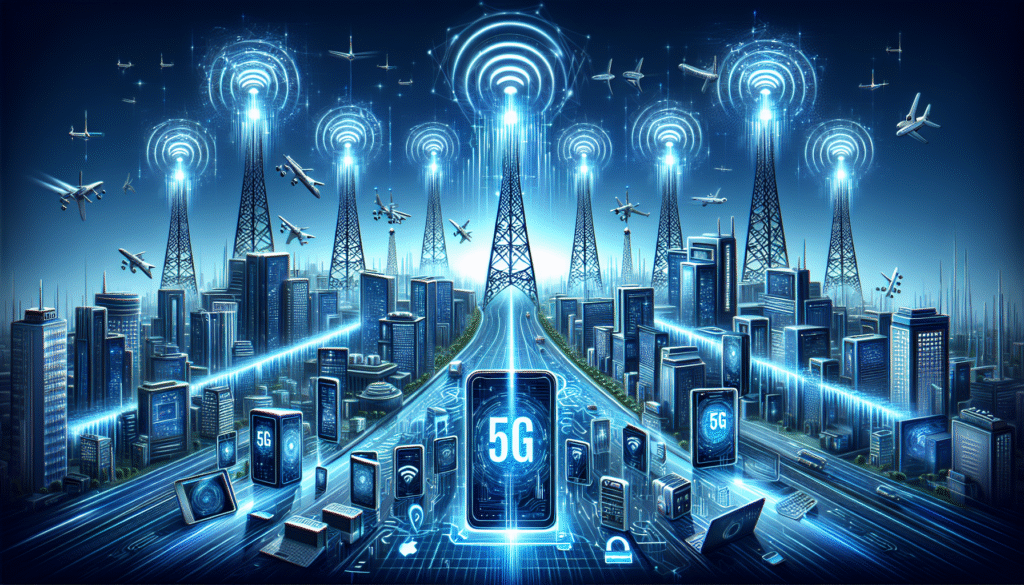
The Power of 5G Technology: Unleashing a New Era of Connectivity
A Quantum Leap in Mobile Technology
5G represents a significant leap beyond 4G LTE, promising to revolutionize not only mobile experiences but entire industries. It’s built on a new radio frequency technology that utilizes higher frequency bands, specifically millimeter waves (mmWave), enabling vastly increased data speeds and lower latency. While 4G offered peak speeds around 100 Mbps, 5G has the potential to reach speeds up to 10 Gbps – a hundredfold improvement. This translates to downloading entire movies in seconds and streaming high-definition video seamlessly. The minimized latency, dropping from around 50 milliseconds in 4G to a near-instantaneous 1 millisecond with 5G, unlocks the potential for real-time applications like remote surgery and autonomous driving.
The Building Blocks of 5G: Key Technological Advancements
5G’s capabilities stem from several key technological advancements. Firstly, the utilization of mmWave allows for greater bandwidth, enabling the transmission of significantly more data. However, mmWave signals are susceptible to interference and have limited range. To overcome this, 5G employs beamforming, a technique that focuses radio waves directly at the user device, improving signal strength and reducing interference. Another crucial element is network slicing, allowing operators to create virtualized and independent networks within the 5G infrastructure, tailored for specific needs and applications. This allows for optimized resource allocation and guaranteed performance for critical services like emergency response or industrial automation.
Transforming Industries: The 5G Impact
The implications of 5G extend far beyond faster download speeds. It has the potential to transform entire industries, creating new opportunities and driving innovation. In healthcare, 5G can enable remote patient monitoring, telemedicine consultations, and even remote surgery, making healthcare more accessible and efficient. Manufacturing stands to benefit from increased automation and real-time data analysis, leading to optimized production processes and improved quality control. The transportation sector will see advancements in autonomous vehicles, smart traffic management systems, and enhanced logistics, paving the way for safer and more efficient transportation networks. The entertainment industry will experience enhanced streaming quality, immersive virtual reality and augmented reality experiences, and interactive gaming with minimal lag.
The Internet of Things (IoT) Revolutionized
5G is a crucial enabler for the burgeoning Internet of Things (IoT). Its high bandwidth and low latency allow for the seamless connection and communication of billions of devices, from smart home appliances to industrial sensors. This interconnected web of devices will generate vast amounts of data, providing valuable insights into various aspects of our lives and enabling smarter decision-making. Smart cities, powered by 5G, can optimize energy consumption, manage traffic flow, and enhance public safety through interconnected sensors and devices.
Addressing the 5G Rollout Challenges
While the potential of 5G is undeniable, the rollout faces several challenges. Deploying 5G infrastructure requires significant investment in new hardware, including base stations and antennas, particularly for mmWave deployment. The limited range of mmWave necessitates a denser network of base stations compared to 4G, increasing deployment costs and complexity. Furthermore, ensuring seamless coverage and addressing potential interference issues are ongoing concerns. Spectrum availability is another critical factor, as 5G requires access to higher frequency bands. Governments and regulatory bodies play a vital role in allocating spectrum efficiently to facilitate 5G deployment.
Security Concerns and Mitigation Strategies
As with any new technology, 5G raises security concerns. The increased complexity of the network architecture and the vast number of connected devices present potential vulnerabilities. Enhanced security protocols and encryption methods are crucial to protect sensitive data and prevent cyberattacks. Network slicing, while offering benefits for customization, can also create potential security risks if not implemented correctly. Robust security measures need to be integrated into each network slice to isolate and protect different segments of the network.
The Future of Connectivity with 5G
5G is poised to reshape our world in profound ways. As the technology matures and becomes more widely available, its impact on various sectors will continue to unfold. From revolutionizing healthcare and transforming transportation to empowering the IoT and creating smart cities, 5G represents the future of connectivity. The continued development and deployment of 5G will unlock new possibilities, drive innovation, and create a more connected and intelligent world.
Navigating the 5G Landscape: Understanding the Different Deployments
It’s important to understand that 5G is deployed in different frequency bands, each offering a unique trade-off between speed and range. Low-band 5G utilizes frequencies similar to 4G, providing wide coverage but lower speeds. Mid-band 5G offers a balance between speed and range, while high-band mmWave delivers the highest speeds but has limited range and requires dense infrastructure. This layered approach allows operators to tailor their 5G deployments to specific needs and optimize the user experience.
The Evolution of Wireless Communication: From 1G to 5G
5G represents the latest evolution in wireless communication technology. From the analog voice calls of 1G to the data-centric capabilities of 4G, each generation has brought significant advancements. 5G builds on this foundation, delivering unprecedented speeds, lower latency, and increased capacity, enabling a truly connected world. Understanding this evolution helps appreciate the magnitude of the 5G revolution and its potential to transform our lives.
The Impact on Businesses: Embracing the 5G Advantage
Businesses across various industries are exploring how 5G can enhance their operations and create new opportunities. From optimizing supply chain management and improving customer experiences to enabling remote collaboration and driving innovation, 5G offers a competitive advantage. Embracing 5G technology and integrating it into business strategies will be crucial for organizations looking to thrive in the increasingly connected future.















